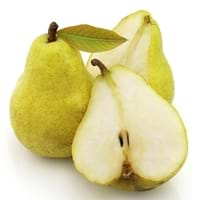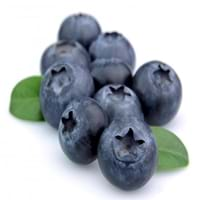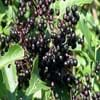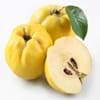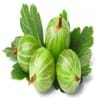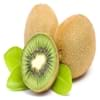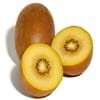Health Benefits
Arthritis prevention, Cancer prevention, Gout treatment, Heart care
Cancer prevention, Heart care, Increases metabolic rate, Strengthening of bones, Treatment of skin Diseases
General Benefits
Anti-inflammatory properties, Boosts immune system, Controls blood pressure, Controls blood sugar levels, Cures fever, Digestive aid, Sore throat treatment
Anti oxidant properties, Boosts immune system, Digestive aid, Eye care, Improves blood circulation, Sore throat treatment
Skin Benefits
Reduces wrinkles, Treatment of acne
Anti-aging benefits, Reduces wrinkles, Skin rejuvenation, Treatment of skin diseases
Hair Benefits
Promotes longer and healthier hair, Shiny hair
Protects hair
Allergy Symptoms
Anaphylaxis, Digestive Problems, Itching, Skin Rashes, Swelling
Abdominal pains, Coughing, Diarrhea, Itching, Runny nose, Sneezing, Swelling of mouth, tongue or lips, Wheezing
Side Effects
Allergic reaction
Allergic reaction
Best Time to Eat
As a snack in the late afternoon, Don't consume at night and before bed, Eat the fresh ones, avoid mixing with any other foods, don't eat after meal., Morning time (before lunch)
Best if taken as a breakfast (or empty stomach), As a snack in the late afternoon, Don't consume at night and before bed, Eat the fresh ones, avoid mixing with any other foods, don't eat after meal., Morning time (before lunch)
Vitamin A (Retinol)
Not Available
Vitamin B5 (Pantothenic Acid)
Not Available
Vitamin B6 (Pyridoxin)
Not Available
Vitamin B9 (Folic acid)
Not Available
Vitamin C (Ascorbic Acid)
Vitamin E (Tocopherole)
Not Available
Vitamin K (Phyllochinone)
Not Available
Lutein+Zeaxanthin
Not Available
Phytosterol
Not Available
Calories in Fresh Fruit with Peel
Calories in Fresh Fruit without Peel
Not Available
Not Available
Calories in Frozen Form
Not Available
Not Available
Calories in Dried Form
Not Available
Not Available
Calories in Canned Form
Not Available
Not Available
Season
Autumn, Summer, Winter
Summer
Varieties
Green Anjou, Red Anjou, Bartlett, Red Bartlett, Bosc, Comice, Concorde, Forelle, Seckel and Starkrimson
Dwarf Huckleberry, Cascade Huckleberry, Mountain huckleberry and Blackwinter Huckleberry
Color
Yellow
Blue, Purple, Purplish black
Inside Color
White
Purple
Taste
Crunchy, Sweet
Sweet
Origin
China, Japan
North America
Grows on
Trees
Not Available
Soil Type
Clayey, Loamy, Sandy
Loamy, Sandy, Well-drained
Climatic Conditions
Cold, Hot, Without frosts
Humid, Warm
Facts about
- The first pear tree was planted in North America in 1620.
- The Chinese considered the pear fruit to be a symbol of immortality.
- This fruit was used as a natural remedy against nausea in ancient Greece.
- "I'm your huckleberry" is a way of saying that one is just the right person for a given job.
- The phrase "a huckleberry over my persimmon" was used to mean "a bit beyond my abilities".
Top Producer
China
United States of America
Other Countries
Argentina, Belgium, India, Italy, Japan, South Africa, Spain, Turkey, United States of America
Canada
Top Importer
Europe
Canada
Botanical Name
Pyrus communis
Gaylussacia brachycera
Synonym
Not Available
Not Available
Subkingdom
Tracheobionta
Tracheobionta
Division
Magnoliophyta
Magnoliophyta
Class
Magnoliopsida
Magnoliopsida
Subclass
Rosidae
Asteridae
Family
Rosaceae
Ericaceae
Species
P. communis
G. brachycera
Difference Between Pear and Huckleberry
We might think that Pear and Huckleberry are similar with respect to nutritional value and health benefits. But the nutrient content of both fruits is different. Pear and Huckleberry Facts such as their taste, shape, color, and size are also distinct. The difference between Pear and Huckleberry is explained here.
The amount of calories in 100 gm of fresh Pear and Huckleberry with peel is 57.00 kcal and 37.00 kcal and the amount of calories without peel is Not Available and Not Available respectively. Thus, Pear and Huckleberry belong to Low Calorie Fruits and Low Calorie Fruits category.These fruits might or might not differ with respect to their scientific classification. The order of Pear and Huckleberry is Rosales and Ericales respectively. Pear belongs to Rosaceae family and Huckleberry belongs to Ericaceae family. Pear belongs to Pyrus genus of P. communis species and Huckleberry belongs to Gaylussacia genus of G. brachycera species. Beings plants, both fruits belong to Plantae Kingdom.
